Robert D. Miller
Large Scale Radio Frequency Wideband Signal Detection & Recognition
Nov 04, 2022



Abstract:Applications of deep learning to the radio frequency (RF) domain have largely concentrated on the task of narrowband signal classification after the signals of interest have already been detected and extracted from a wideband capture. To encourage broader research with wideband operations, we introduce the WidebandSig53 (WBSig53) dataset which consists of 550 thousand synthetically-generated samples from 53 different signal classes containing approximately 2 million unique signals. We extend the TorchSig signal processing machine learning toolkit for open-source and customizable generation, augmentation, and processing of the WBSig53 dataset. We conduct experiments using state of the art (SoTA) convolutional neural networks and transformers with the WBSig53 dataset. We investigate the performance of signal detection tasks, i.e. detect the presence, time, and frequency of all signals present in the input data, as well as the performance of signal recognition tasks, where networks detect the presence, time, frequency, and modulation family of all signals present in the input data. Two main approaches to these tasks are evaluated with segmentation networks and object detection networks operating on complex input spectrograms. Finally, we conduct comparative analysis of the various approaches in terms of the networks' mean average precision, mean average recall, and the speed of inference.
Large Scale Radio Frequency Signal Classification
Jul 20, 2022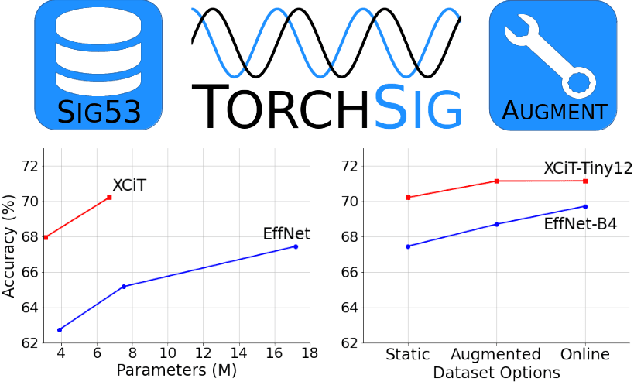

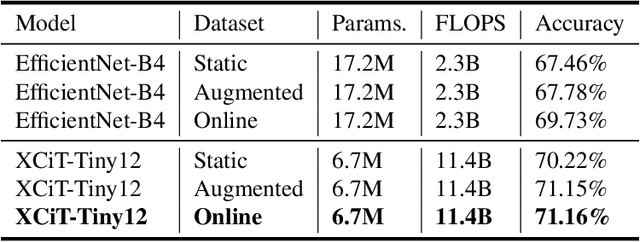
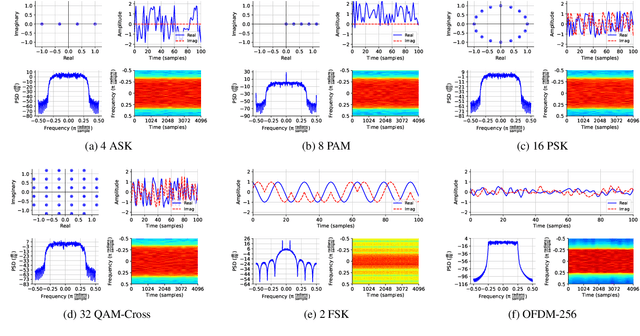
Abstract:Existing datasets used to train deep learning models for narrowband radio frequency (RF) signal classification lack enough diversity in signal types and channel impairments to sufficiently assess model performance in the real world. We introduce the Sig53 dataset consisting of 5 million synthetically-generated samples from 53 different signal classes and expertly chosen impairments. We also introduce TorchSig, a signals processing machine learning toolkit that can be used to generate this dataset. TorchSig incorporates data handling principles that are common to the vision domain, and it is meant to serve as an open-source foundation for future signals machine learning research. Initial experiments using the Sig53 dataset are conducted using state of the art (SoTA) convolutional neural networks (ConvNets) and Transformers. These experiments reveal Transformers outperform ConvNets without the need for additional regularization or a ConvNet teacher, which is contrary to results from the vision domain. Additional experiments demonstrate that TorchSig's domain-specific data augmentations facilitate model training, which ultimately benefits model performance. Finally, TorchSig supports on-the-fly synthetic data creation at training time, thus enabling massive scale training sessions with virtually unlimited datasets.
Practical Fingerprinting of RF Devices in the Wild
May 10, 2021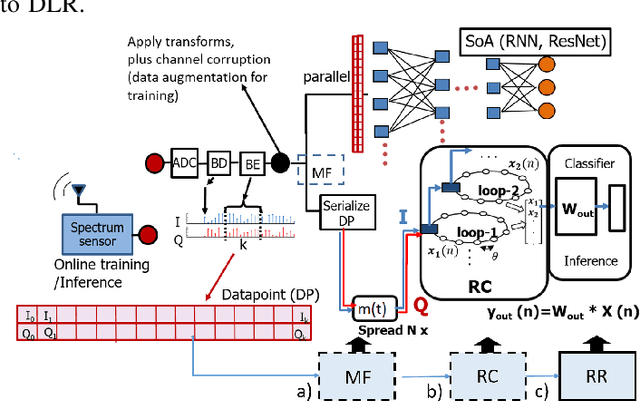
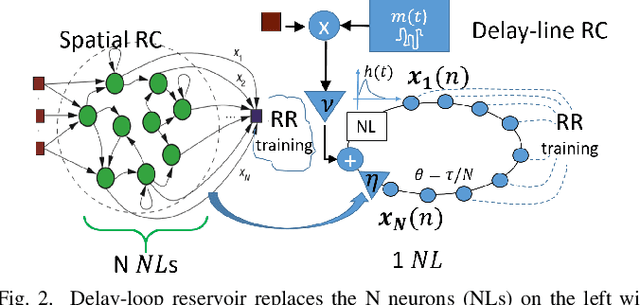
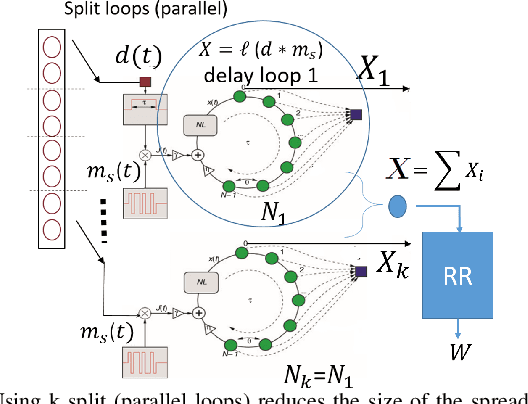

Abstract:We present a new RF fingerprinting technique for wireless emitters that is based on a simple, easily and efficiently retrainable Ridge Regression (RR) classifier. The RR learns to identify devices using bursts of waveform samples, conveniently transformed and preprocessed by delay-loop reservoirs. Deep delay Loop Reservoir Computing (DLR) is our processing architecture that supports general machine learning algorithms on resource-constrained devices by leveraging delay-loop reservoir computing (RC) and innovative architectures of loop trees. In prior work, we trained and evaluated DLR using high SNR device emissions in clean channels. We here demonstrate how to use DLR for IoT authentication by performing RF-based Specific Emitter Identification (SEI), even in the presence of fading channels and heavy in-band jamming by leveraging a matched filter (MF) extension, dubbed MF-DLR. We show that the MF processing improves the SEI performance of RR without the RC transformation (MF-RR), but the MF-DLR is more robust and applicable for addressing signatures beyond waveform transients (e.g. turn-on).
 Add to Chrome
Add to Chrome Add to Firefox
Add to Firefox Add to Edge
Add to Edge